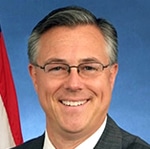The following message was sent to the UTU National Legislative Office from Federal Railroad Administrator Joe Szabo:
In his State of the Union Address last week, President Obama spoke about the importance of investing in our infrastructure as a path to create new jobs and lay a foundation for America’s economic success.

In the last three years, American businesses have added 6 million new jobs, including a half-million in manufacturing. But there’s more to be done. And while construction jobs are often the most visible, our investments can continue remaking America as a magnet for manufacturing.
In a new report, the Environmental Law and Policy Center highlights the scope of the railway supply industry in the Midwest.
The report found 122 suppliers in Ohio, 99 in Indiana, 49 in Michigan, 84 in Illinois, 73 in Wisconsin, 26 in Minnesota and seven in Iowa. The Midwest is not alone. Railway suppliers are located in 49 out of 50 states and employ 94,000 people.
Manufacturers like Cleveland Track Material in Ohio are benefiting from the $12 billion the U.S. DOT has invested in passenger rail over the last four years. Started by Vietnam Veteran Bill Willoughby in 1984 in an impoverished section of Cleveland, the company was one of 53 across 20 states that received an order from Maine’s Downeaster service expansion project. Last year, Cleveland Track invested over $5 million in new production equipment at their plant. The company employs 300 people in Ohio, Tennessee and Pennsylvania.
Manufacturers are opening new plants in the United States. Recently, the state of California awarded the newly-opened Nippon Sharyo plant in Illinois with a contract to build 130 rail cars that will run on the state’s existing corridors.
Amtrak and California High Speed Rail Authority have answered our call to work together to explore a bundled procurement for the next generation of high-speed rail equipment – equipment designed to reach up to 220 mph. Combining orders will provide incentives to high-speed rail manufacturers to build factories domestically, creating new high-quality jobs and tremendous opportunities for suppliers.
Investments in freight rail will also mean new jobs at suppliers. Last week, the Association of American Railroads announced the industry would invest more than $24 billion this year in its network.
President Obama also recently signed into law the Shortline and Regional Railroad 45G Tax Credit. The Railway Tie Association estimates that when the 45G credit is in effect, between 500,000 and 1,500,000 additional railroad ties will be installed each year.
For the first time in more than a decade, America is adding new manufacturing jobs. Continued investment in our rail network will put Americans to work in factories today, and lead to economic expansion over the next generation.